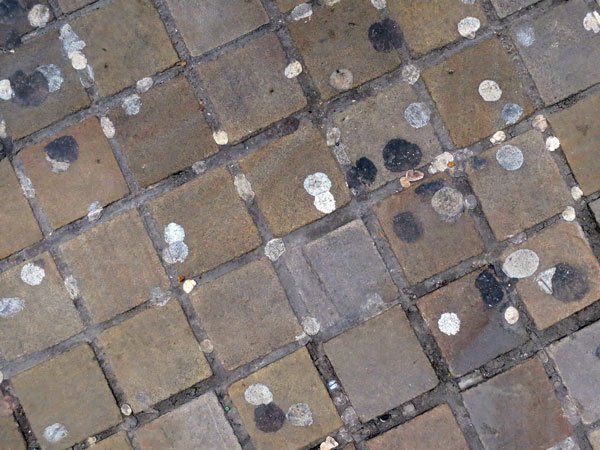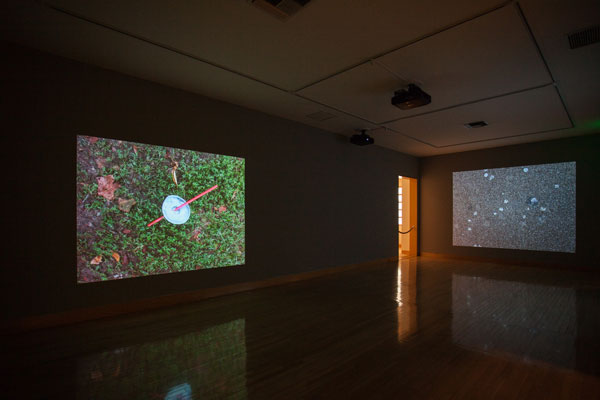Street photography is one of the great genres of modernist photography, peaking at mid-century with the work of Robert Frank, Gary Winogrand, Helen Levitt and others who used the camera to capture the strange little extemporaneous moments one experiences walking city streets. It was the photographic equivalent of Abstract Expressionist painting, because it so perfectly defined the essence of the medium; no drawing or painting could ever compete with the camera’s ability to catch the fleeting instant. In his show at Fraenkel Gallery, Christian Marclay creates a highly original spin on the tradition, editing thousands of still photographs of the surfaces of London streets into frenetic stop-action animation videos. Pointing his camera straight down at the ancient, grimy surface of the streets, which are composed of a patchwork of fragments accumulated over hundreds of years, Marclay utilizes the trash and debris to create a choreography of moving shapes that dance across the surface of the screen. Presented as large-format projections, the works have the presence of sizable abstract paintings, which they tend to resemble.

Christian Marclay, Cigarettes, 2016 (video still) Single-channel projected animation, silent Continuous loop, © Christian Marclay, courtesy Fraenkel Gallery, San Francisco
What the works really deal with, however, is movement, and the forms Marclay employs are of the most mundane and debased nature: cigarette butts, wads of chewing gum, drinking straws, bottle caps and cotton balls. These discarded objects become the characters in the animations, jerkily moving across the screen in a bouncy rhythm that recalls early cinema—zoetropes, kinetoscopes and the like. Shot as individual digital photographs and put together in an editing program, the unappealing objects are magically transformed into optically dazzling images. In Chewing Gum (2016), the vaguely circular wads of gum appear and disappear, creating a highly charged hallucinatory-like effect as the viewer stares at the flickering screen. Cigarettes (2016) deals more with movement and choreography, as the discarded butts shift around the screen, growing longer and shorter. In contrast to most animation, the crude and jerky nature of Marclay’s works actually adds to the appeal; they have the freshness and spontaneity of a quickly drawn sketch.

Christian Marclay, Chewing Gum, 2016 (video still) Single-channel projected animation, silent
Continuous loop, © Christian Marclay, courtesy Fraenkel Gallery, San Francisco

Installation view, © Christian Marclay, courtesy Fraenkel Gallery, San Francisco
As well as creating a new interpretation of the well-traveled tradition of street photography, the “Six New Animations” also extend a much more esoteric art form, abstract animation. Despite the fact that they are highly realistic images, the flatness of the space and the general format of the works relate more to the kind of movement one experiences in the abstract films of Oskar Fischenger and Hans Richter that date from the early to mid-20th century than to any forms of photography. One of the greatest achievements of modernist art, abstract animation has managed to elude widespread recognition, despite recent showcases like MOCA’s “Visual Music” exhibition (2005), most likely because it is one of those crossover art forms; technically it is film, but in reality it has much more affinity to abstract painting. This quality of crossing over from one medium to another often gives artists great opportunity for innovation. Marclay’s works enthrall the viewer because they feel so fresh and innovative, despite the previously mentioned references. Significantly, they are silent animations, setting them apart from most abstract film that strives to create a visual equivalent to music. Like his magnum opus The Clock, these new works continue to show Marclay’s prodigious originality as an artist.



















0 Comments